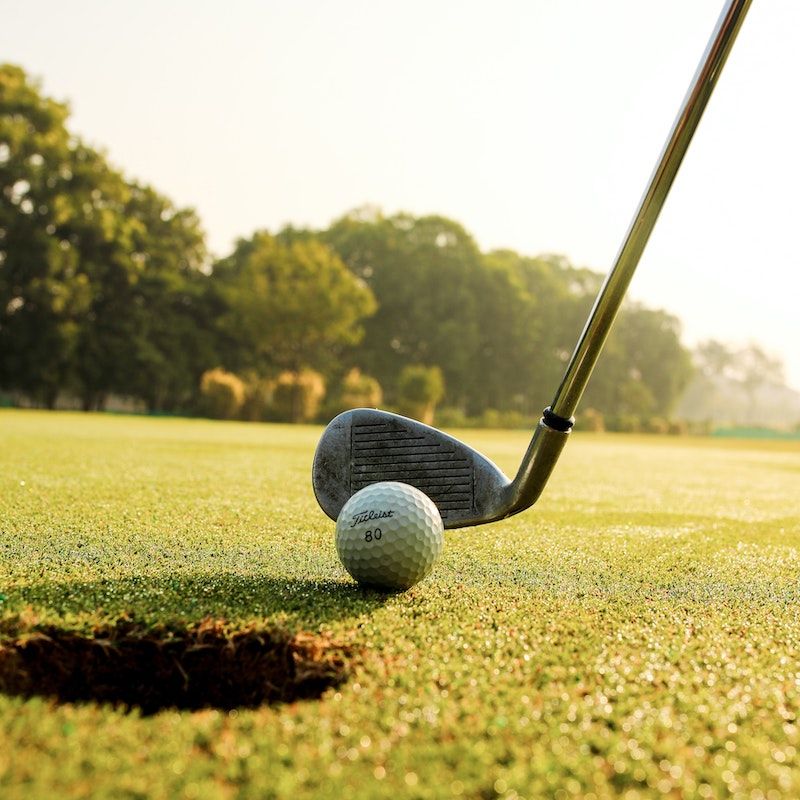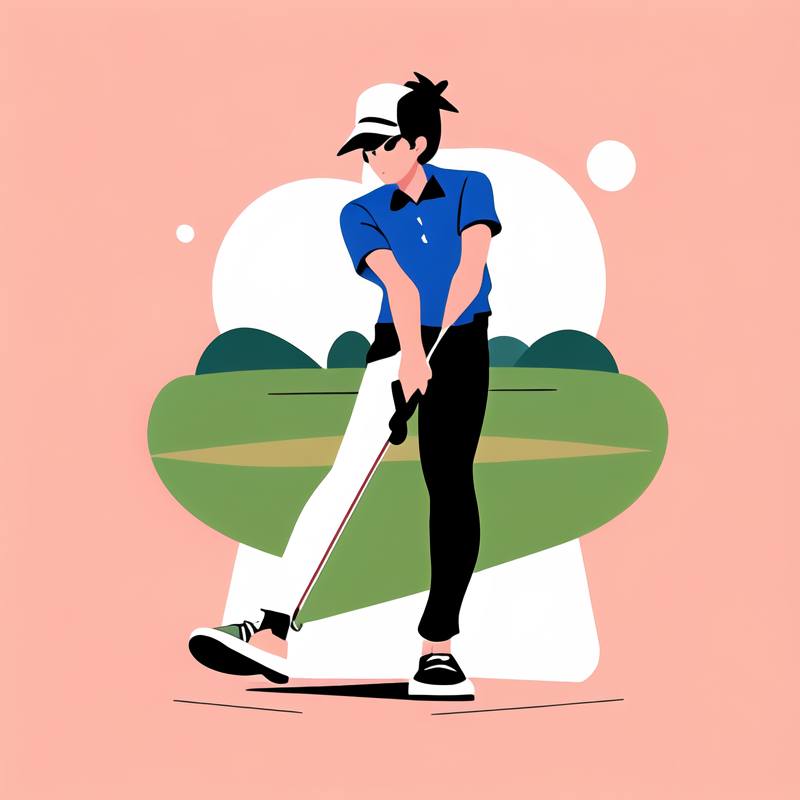The Myth of One Ball Position
One ball position for all golf shots! Many golfers hear that they should use one ball position for all golf shots. This advice often comes from well-meaned yet mistaken sources. People might tell you to always place the ball at the same spot in your stance. They say doing so simplifies the game. But this ‘one size fits all’ advice doesn’t add up when you look closer at the dynamics of golf.

Exploring Common Beliefs and Misconceptions
The common belief is clear: pick one ball position and stick with it. Ben Hogan, a golf legend, argued for this with long clubs. Some pros recommend changing positions based on the club you’re using. Internet tips fluctuate, often contradicting each other. What do these mixed messages mean for the average player? They lead to confusion and inconsistency.
The misconception lies in ignoring other factors. Things like swing dynamics, low points, and club types matter too. A singular ball position doesn’t accommodate all these variables. It’s not just about where the ball sits. It’s also about club path, angle of attack, and swing arc. These factors change with each club, affecting how you should position the ball.
The Impact of Club Selection on Ball Position
Understanding how club selection affects ball position is crucial in golf. Different clubs require different ball placements due to their design and the type of shot they produce.
How Different Clubs Dictate Ball Placement
Each golf club is engineered with a specific purpose and thus influences where you should place the ball. Here’s a simplified guide to how various clubs dictate ball placement:
- Drivers: Position the ball inside your left heel. This setup helps in hitting the ball on the upswing, maximizing distance.
- Long Irons and Fairway Woods: Slightly back from the driver’s placement. These clubs still benefit from a forward position but with a bit more angle of attack.
- Mid Irons: Around the center of your stance. This position allows for a more downward strike, which is ideal for these clubs.
- Short Irons and Wedges: Even further back in your stance. They require precision and a steeper angle of attack for better control and backspin.
Remember, these are starting points. Personal comfort and swing dynamics also play a part in determining the best ball position. By recognizing the design and intent of each club, you can adjust your ball position to optimize performance on every shot.

The Role of Stance in Ball Positioning
Stance is key in placing the golf ball for every shot. How you stand – the width and direction of your feet – changes where the ball lies relative to your swing’s low point. This affects the shot’s loft, spin, and direction. Mastering stance adjustments can lead to more consistent and accurate shots.
Understand How Stance Width Modifies Ball Position
To grasp how stance width affects ball position, let’s consider a few points:
- Wider Stance: Moves the low point back, making the ball position seem more forward. This can be good for longer clubs, aiding in a shallow attack angle.
- Narrower Stance: Brings low point closer to the ball, which can help increase backspin for short irons and wedges.
- Consistent Width: Keeping stance width consistent while adjusting ball position within it can help control shot trajectory. This is important for shots that require more precision like approach shots with your mid irons.
It’s not about sticking to one ball position. Instead, it’s about fine-tuning your stance width to match your desired shot. Altering stance width can be the difference between a clean strike and a frustrating miss. Remember, moving your right foot back while keeping the left foot still alters the ball’s position even if the ball itself doesn’t move. Experimentation and practice are key to finding the stance width that works best for you and your game.
Effect of Stance Direction on Ball Position
The Influence of Open and Closed Stances
Stance direction greatly alters ball position in golf. Open and closed stances shift the ball without moving it. An open stance, where your front foot is back and your back foot is forward, moves the ball back in your stance. This can cause higher, fade-type shots. A closed stance does the opposite. Your front foot is forward and your back foot is back. This pushes the ball further forward, aiding in lower, draw-type shots.
Understanding this can help tailor your shots based on the desired outcome. For instance, if you want to hit a fade, open your stance slightly. The ball will seem more towards your back foot, promoting that left-to-right motion in the air. On the other hand, closing your stance can help achieve a draw. Here, the ball positions closer to your front foot and encourages a right-to-left trajectory.
Remember, the direction of your stance affects more than just the flight. It changes how the club makes contact with the ball. So, practicing with open and closed stances can tune your impact for better control. Whether it’s managing the wind or shaping shots around obstacles, these stance adjustments are vital. Experiment during practice to see how these changes influence your shots. Over time, you’ll know just how to stand for the shot you need.
Ball Position and Swing Dynamics
Understanding the relationship between ball position and swing dynamics is essential for golfers at all levels.
The Relationship Between Ball Position and Low Point
The location of the ball in your stance is crucial because it correlates with the low point of your swing. ‘Low point’ refers to the part of the swing arc where the club is closest to the ground. Positioning the ball correctly relative to the low point is vital for solid ball striking.
- Forward Placement: If you place the ball too far forward (closer to the target), the club might strike the ball on the upswing, causing a higher flight and potentially less control.
- Backward Placement: Conversely, a ball placed too far back might be hit with a descending blow, increasing spin and lowering the flight.
- Centered Placement: A ball positioned around the center of your stance or slightly forward maximizes the chance of striking the ball at or just after the low point, leading to a more consistent and controlled shot.
It’s important to note that the swing’s low point can vary with each club and shot type. For example, with longer clubs like drivers, the low point is typically behind the ball, allowing you to hit up on it. However, with wedges, the low point is closer to the middle of the stance, promoting a downward strike. By understanding this concept, you can adjust your ball position to achieve the desired trajectory and shape for your shots. Practice is key in learning how these adjustments affect your swing and the resulting ball flight.
Ball Position in Short Game versus Long Game
When we address ball position, it’s critical to distinguish between the short game and the long game.
Adapting Ball Position for Various Golf Shots
Different clubs and shots demand unique ball placements. For the long game, like driving, the ball typically sits near the inside of the front foot. This helps launch the ball on an upward trajectory. In the short game, such as chipping and putting, ball position varies more. It depends on factors like the lie of the land and desired shot type.
In the short game, precision is key. You might place the ball closer to the back foot for a chip to ensure a lower flight and more control. For putting, positioning the ball opposite your front foot can help to hit the ball at the right angle. Long shots need power and distance. A forward ball position assists in achieving maximum force and loft.
To improve, test different ball placements in various scenarios. Pay attention to how the ball reacts. Does it fly high or low? Does it draw or fade? Adjust until you find what works best for you and your swing. Remember, there is no one-size-fits-all. What matters is how your ball placement affects your final shot.
Practical Tips for Finding the Right Ball Position
Finding the right ball position can boost your golf game significantly. To discover your optimal spot, experimenting is key. Here’s a step-by-step guide to help you find the perfect ball position for your shots.

How to Experiment with Ball Position in Your Game
- Start with the Basics: Use the guidelines for club-specific ball positions as a starting point. For instance, drivers inside your left heel and wedges more centrally.
- Adjust for Comfort: While keeping the basics in mind, shift the ball slightly to find the most comfortable position for your swing.
- Check Your Shots: After each adjustment, analyze the shot. Look for changes in trajectory, distance, and shot shape.
- Use Practice Swings: Feel the low point in your swing during practice strokes to understand where the club will impact the ground.
- Slow Changes: Make minor changes to your stance and ball position. Small tweaks can have a big impact.
- Take Notes: Write down observations and shot results. This will help you track what works and what doesn’t.
- Consult a Pro: Sometimes a second pair of eyes helps. A golf pro can provide feedback on your stance and ball position.
- Be Consistent with Practice: Once you find a position that works, practice it regularly to develop muscle memory.
Practicing these steps can take your game to new heights. And remember, there’s no one ball position for all golf shots. Tailor your stance to each club and shot for the best results.
Troubleshooting Common Ball Position Errors
Golfers often run into issues with ball positioning, leading to poor shots and frustration. Recognizing mistakes in how you position the ball is critical. Making the right adjustments can turn your game around. Let’s dive into common errors and how to fix them.
Recognizing and Correcting Mistakes in Ball Positioning
To spot and fix ball position errors, consider these tips:
- Check Alignment: Make sure your ball isn’t too far forward or back in your stance. A ball placed too far forwards can cause high, thin shots. If it’s too far back, you might hit the ball too low or hook it.
- Assess Stance Width: Incorrect stance width affects ball position. A stance that’s too wide or narrow can move the low point in your swing, changing where you strike the ball.
- Note Stance Direction: An open or closed stance shifts the ball’s position without moving it. Ensure your feet align correctly to avoid unintentional curving of the ball’s flight.
- Examine Ball Flight: The ball’s flight tells you a lot. High shots might mean the ball is too far forward; low shots suggest it’s too far back.
- Change Incrementally: Don’t overhaul your ball position all at once. Small, measured adjustments are more effective and easier to manage.
- Practice: Use your observations to practice the corrected ball position. Repetition will help you develop a feel for the right positioning.
By addressing these common mistakes, your ball positioning should improve. Remember, there’s no magic spot for every shot. It’s about finding the right position for each club and shot. Take your time to experiment and practice these tips on the range. With dedication, your shots will stop being a mystery and start becoming a strength in your game.
